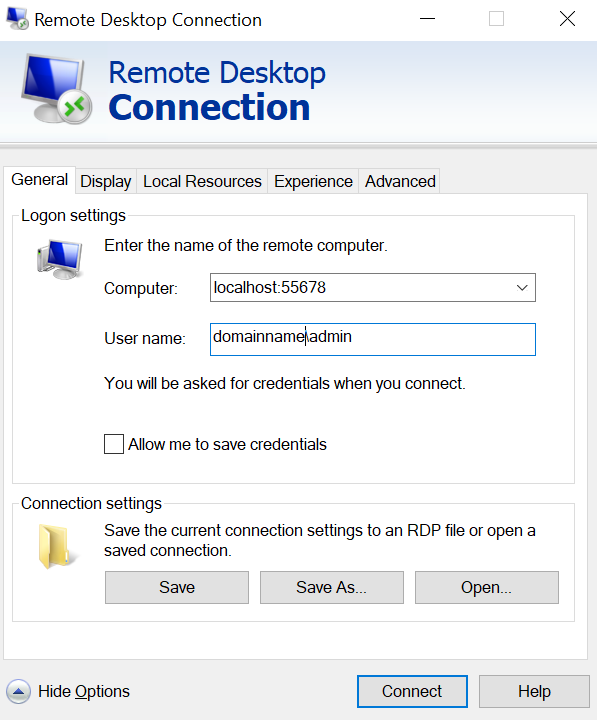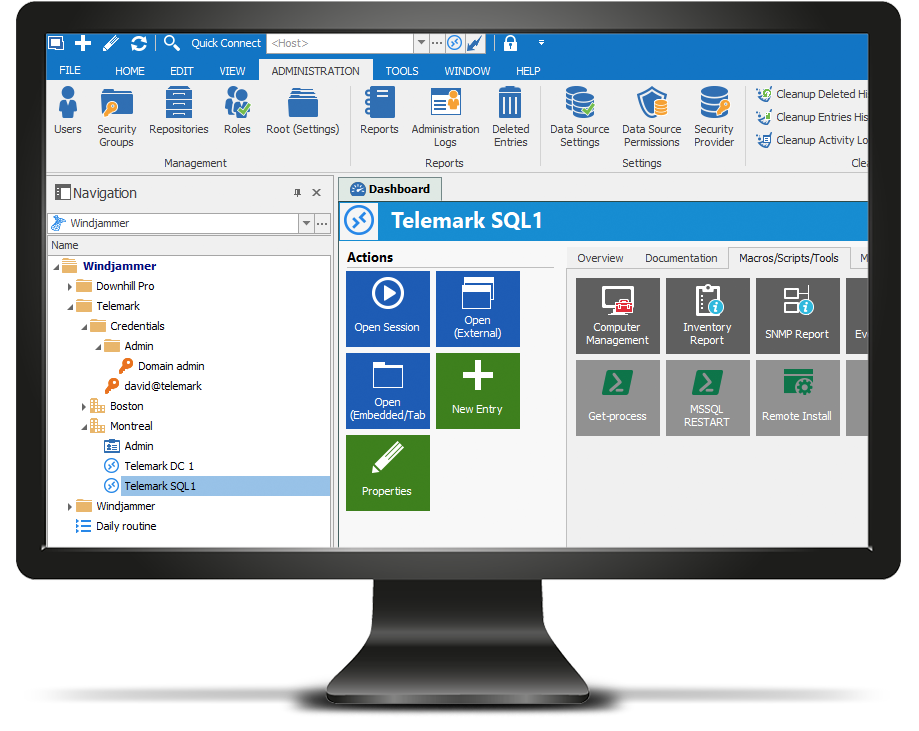
Thus when you change your lab account password, you only need to change the password stored by RDCMan in one place. Servers can inherit their logon settings from a parent group or a credential store. You can view all the servers in a group as a set of thumbnails, showing live action in each session. You can connect or disconnect to all servers in a group with a single command. It is useful for managing server labs where you need regular access to each machine such as automated checkin systems and data centers. RDCMan manages multiple remote desktop connections. # file or spreadsheet, or a separate JSON / XML file.Download Remote Desktop Connection Manager (530 KB) Run now from Sysinternals Live. # more work you could acquire this information from Active Directory, a stored CSV # based on what PDQ Inventory Collection I care about at the moment, but with a little # For instance, I query the relevant workstations out of the PDQ Inventory database # In a real scenario, you can obtain this information from whatever source you desire # Mock a couple of computer objects using a hash $credentialHash = Read-Host "What is the password for $($env:username)?" -AsSecureString $credentialHash = Read-Host "What is the password for ExampleUser1?" -AsSecureString # Collect the SecureString password from the user: # Launch RDCMan.exe using our temporary RDG file # This is our RDG file for launching RDCMan, although it is not required that it be provided a.

# Create a temporary file to hold the XML $fileElement.RemoveChild($groupTemplateElement) # Remove the Group template object, as it is just a blank stub at this point. # Add (via AppendChild method) a single Server object to a Group objectįunction Add-ServerToGroup($group, $serverName) # Create an RDG (XML formatted) file for RDCMan to import so that all workstations are in relevant groups. $ExampleGroup = Get-Group $fileElement 'ExampleUser1-group' 'exampleUser1' (Secure-Password $RDCMan ((New-Object PSCredential "user",$credentialHash).GetNetworkCredential().password)) ‘ExampleDomain’ $adminGroup = Get-Group $fileElement 'Admin-group' $env:USERNAME (Secure-Password $RDCMan ((New-Object PSCredential "user",$credentialHash).GetNetworkCredential().password)) $env:USERDOMAIN # Name your root element in the RDCMan connection window. # Root XML element that objects will append to # Be aware that you may need to update the path based on where you store the file

# Store the XML template into a variable for more sensible parsing / operating $RDCMan = "E:\Remote Desktop Connection Manager\RDCMan.exe" # Store the location of the Remote Desktop Connection Manager file


 0 kommentar(er)
0 kommentar(er)
